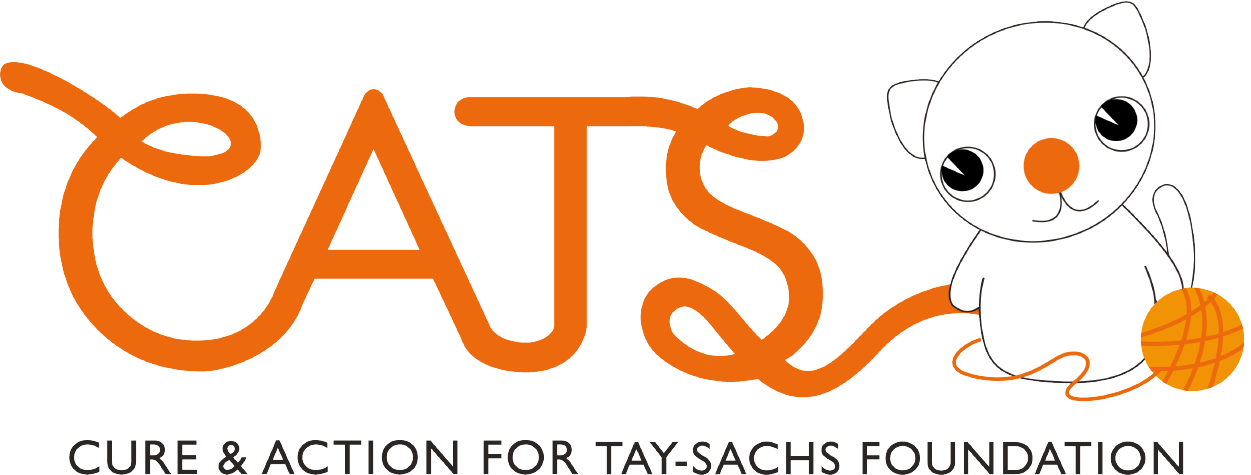
What is Tay-Sachs?
How Tay-Sachs is inherited
Tay-Sachs disease is a progressive neurological genetic disorder.
It is named after Waren Tay (1843-1927), a British ophthalmologist who in 1881 described a patient with a cherry-red spot on the retina of the eye. It is also named after Bernard Sachs (1858-1944), a New York neurologist whose work several years later provided the first description of the cellular changes in Tay-Sachs disease. Sachs also recognized the familial nature of the disorder, and, by observing numerous cases, he noted that most babies with Tay-Sachs disease at that time were of Eastern European Jewish origin.
Today, Tay-Sachs occurs among people of all backgrounds.
Tay-Sachs sufferers have two basic problems: they don’t have enough (or any) Hexosaminidase A (Hex-A) enzyme and they end up with too much GM2 waste. Hex-A is an enzyme that is created outside of a cell and absorbed into the cell. When the enzyme is mutated (like in TSD), the cell does not recognize it and quality control mechanism within the cell will not allow the mutated enzyme to be absorbed. The Hex A’s primary job is to break down waste inside a storage area in a cell. That storage area is called a lysosomal storage area and that is why Tay-Sachs is considered a Lysosomal Storage Disease (LSD).
The waste product is called GM2. It is basically a big complicated strand that is too big and long for a brain cell to deal with. The Hex-A breaks the GM2 down into little strands that can be used by the cell. When there is too-little Hex-A, the large GM2 strands begin to accumulate. As the waste accumulates the storage area begins to swell; it is the swelling that causes the cell to malfunction and eventually die. Different enzymes and waste products are created in different parts of the body. Hex-A and GM2 are created in brain cells – that is why Tay-Sachs is primarily a neurological condition.
The less Hex-A a person has the faster waste builds up and the more severe the brain damage. Children affected by the Infantile form generally have no Hex-A, Juvenile On-Set sufferers generally have little Hex-A, and finally Late On-Set victims have more Hex-A but not nearly enough to stop the progressive brain damage.
In Classic Infantile the destructive process begins in the fetus early in pregnancy, although the disease is not clinically apparent until the child is several months old. By the time a child with Tay-Sachs disease is three or four-years old, the nervous system is so badly affected that life itself cannot be supported. Even with the best of care, all children with classic Tay-Sachs disease die early in childhood, usually by the age of 5, although some do live longer.
Children with Juvenile Hex-A deficiency usually develop symptoms between the ages of 2 and 5 years that resemble the symptoms of the Classic Infantile form. Though the course of the disease is slower, end stages generally occur in late adolescence or into the 20s. If starting after age 5, symptoms may be milder than those that characterize earlier onset forms. Mental abilities, vision and hearing remain intact, but affected individuals develop ataxia (lack of coordination), dysarthria (slurred speech), muscle atrophy (weakness), muscle cramps, tremors, unsteady gait and sometimes mental illness.
Late Onset or Chronic Tay-Sachs’ symptoms typically presents in adolescence, with dysarthria, proximal (trunk) muscle weakness, tremor and ataxia. Muscle cramps, especially in the legs at night, and fasciculations (muscle twitching) are common. Not all symptoms are present in every individual affected by the disease; weakness of the proximal muscles, however, is a symptom common to all. Examples of trunk muscle weakness may include difficulty rising from a seated position, trouble getting out of bed, struggling to balance while getting dressed. Symptoms of manic-depression or psychotic episodes may be present in about 30% of affected persons.
At the moment there is no cure for Tay-Sachs or its associated diseases. Children affected with Tay-Sachs have no hope unless we help raise funds to aid the research on the way.
A cure for Tay-Sachs will also mean a cure for over 70 other Lysosomal Storage Diseases as well as other neurological conditions such as Parkinson’s, Alzheimer’s and Multiple-Sclerosis.
For more information on Tay-Sachs please visit our resource centre which has links to research and other informative websites.



